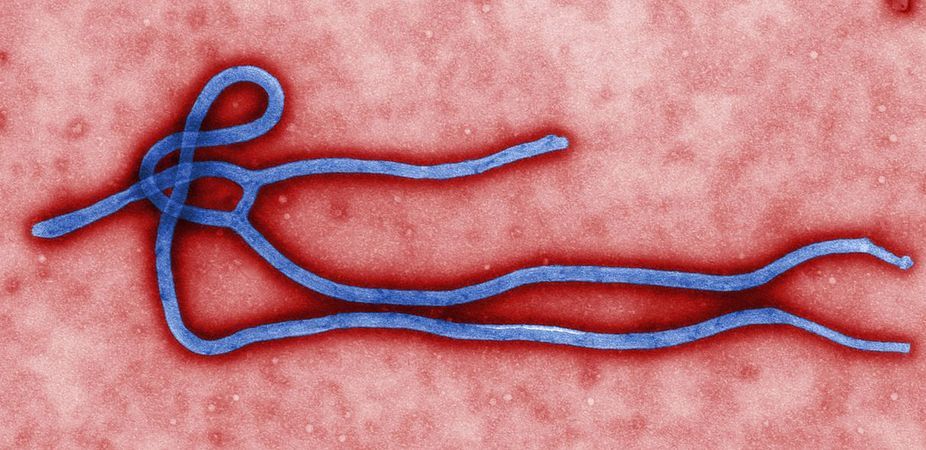
Eight Ebola patients in Nigeria will be treated with an experimental drug called Nano Silver, the Nigerian minister of health said, according to news reports.
The drug was reportedly developed by a Nigerian doctor living overseas, and is being shipped to Nigeria's biggest city, Lagos. But the health minister did not disclose the name of the doctor who developed the treatment, and little else is known about it, the Wall Street Journal reported.
One possibility is that the drug is made from nanoparticles of silver, but it may also be made from other components, experts say. In any case, it's highly unlikely the medicine has ever been tested against Ebola in nonhuman animals, experts say.
"I am suspicious of the claim … of this being a viable treatment for Ebola virus, and I am worried that this will cause more harm than good," said Dr. Amesh Adalja, an infectious-disease specialist and a senior associate at the University of Pittsburgh Medical Center's Center for Health Security. [5 Things You Should Know About Ebola]
Experimental drugs
The current Ebola outbreak — the largest in history — has killed more than 1,000 people in West Africa. Because there is no approved vaccine or treatment for Ebola, and the virus has a high fatality rate, the World Health Organization decided this week that it was ethical to use unproven drugs in the current outbreak.
Two American health care workers and a Spanish priest received doses of an experimental, antibody-based drug called ZMapp. (The Americans are reported to be improving; the priest has died.) A Canadian company is donating 1,000 doses of its experimental drug to Liberia, and the U.S. Food and Drug Administration lifted a hold on using another drug, developed by Tekmira Pharmaceuticals. All of those drugs have been tested in nonhuman primates, and the Tekmira drug is going through initial safety trials in humans.
Sign up for the Live Science daily newsletter now
Get the world’s most fascinating discoveries delivered straight to your inbox.
But the drug that Nigerian health officials plan to use is much less well known — and likely less tested — than any of these experimental compounds, experts say.
Nano silver
No one has reported on what Nano Silver is made of, or how it works.
One possibility is that the drug uses tiny — or "nano" — particles of silver. There is some evidence that silver has antimicrobial properties, said Dr. William Schaffner, a professor of preventive medicine and infectious diseases at Vanderbilt University Medical Center in Nashville, Tennessee.
But as far as taking it orally as medicine, "silver has been tried in various other circumstances against several different infections with very limited effect," Schaffner told Live Science.
Adalja noted that silver coatings on bed railings, catheters and endotracheal tubes can inhibit bacteria from colonizing those surfaces. Silver is also added to certain topical antibacterial creams, such burn creams, to prevent infection, he said.
But there's no peer-reviewed evidence that silver could help a person infected with the Ebola virus, Adalja said. And if the drug were actually made of tiny silver nanoparticles, then the particles could potentially penetrate cells and "wreak some havoc there," Adalja added.
In the U.S. and elsewhere, the diet supplement colloidal silver is popular, although drinking too much of the liquid silver suspension can have an ugly side effect: Colloidal silver can turn people blue.
But it's possible that the phrase "nano silver" is just a catchy name for a totally different compound, Adalja said.
No animal testing
It's unlikely that Nano Silver has been tested in animals infected with Ebola, Adalja said. In the United States, Ebola is incredibly hard to gain access to: Anyone who handles live Ebola virus must work in one of a handful of biosafety level 4 (BSL-4) laboratories, and must be cleared by both the FBI and the Centers for Disease Control and Prevention (CDC) to work with such a dangerous agent, Adalja said.
Another reason to doubt the treatment's validity is that any success in Ebola research tends to be big news, he said. In other words, if Nano Silver were showing promise, it would likely not have just been noticed now.
"Most of the things that are going on with Ebola are very well publicized," Adalja told Live Science.
Giving untested treatments to Ebola patients is a risky proposition, Schaffner said.
People may think to themselves, "'These are desperate circumstances. What's to lose?'" Schaffner said. "There's a terrific amount to lose."
If the drugs harm people, or are just useless, "the already shaky confidence in the health care system could be threatened," Schaffner said.
Even focusing on more tested drugs could undermine the public health effort. Quantities of all the experimental drugs are scarce, and are no substitute for "tried and true" methods for stopping Ebola, Adalja said.
"That involves basic public health and hygiene, finding cases, reporting them and tracking them," Adalja said.
Follow Tia Ghose on Twitter and Google+. Follow Live Science @livescience, Facebook & Google+. Original article on Live Science.

Tia is the managing editor and was previously a senior writer for Live Science. Her work has appeared in Scientific American, Wired.com and other outlets. She holds a master's degree in bioengineering from the University of Washington, a graduate certificate in science writing from UC Santa Cruz and a bachelor's degree in mechanical engineering from the University of Texas at Austin. Tia was part of a team at the Milwaukee Journal Sentinel that published the Empty Cradles series on preterm births, which won multiple awards, including the 2012 Casey Medal for Meritorious Journalism.
Most Popular

